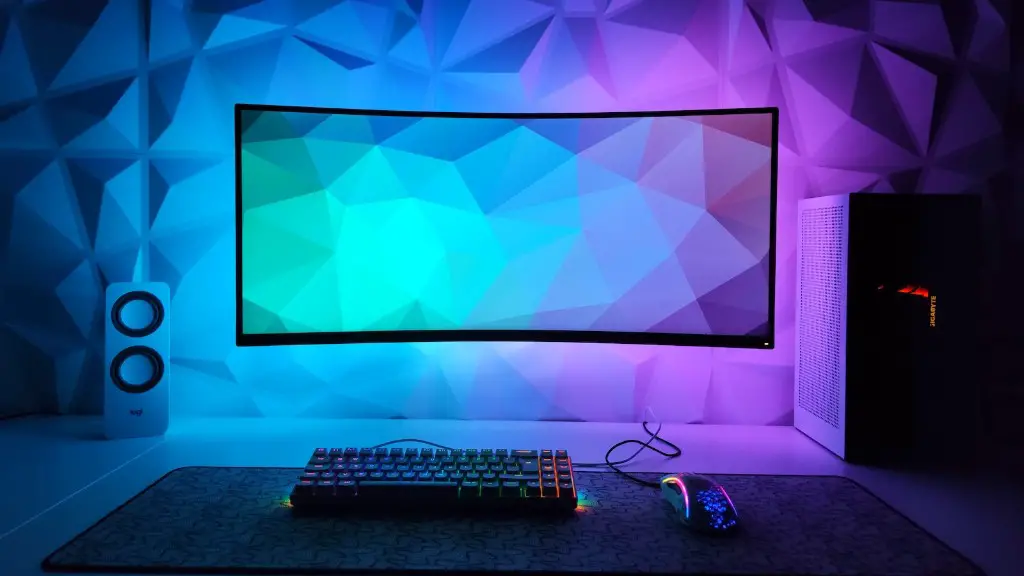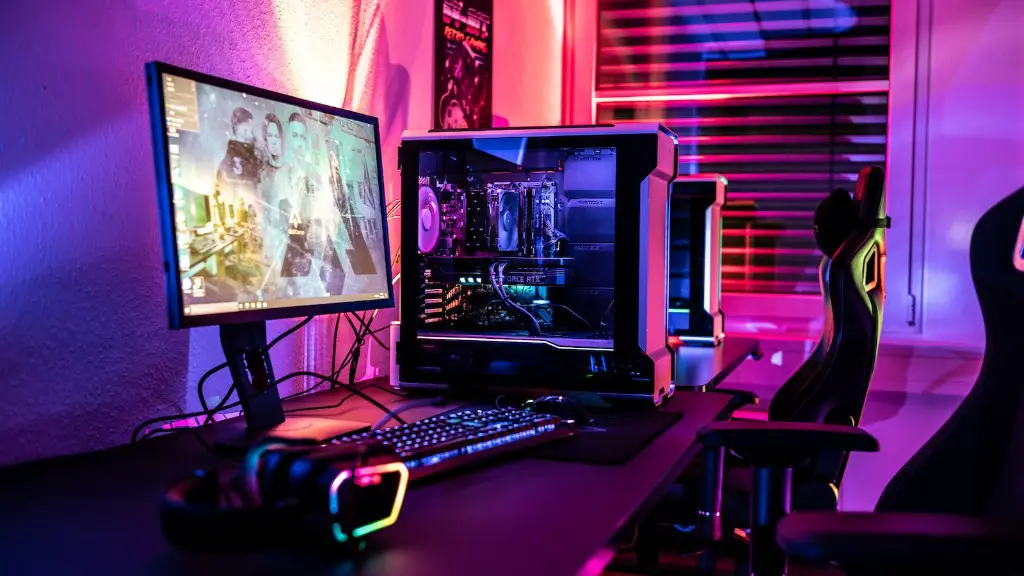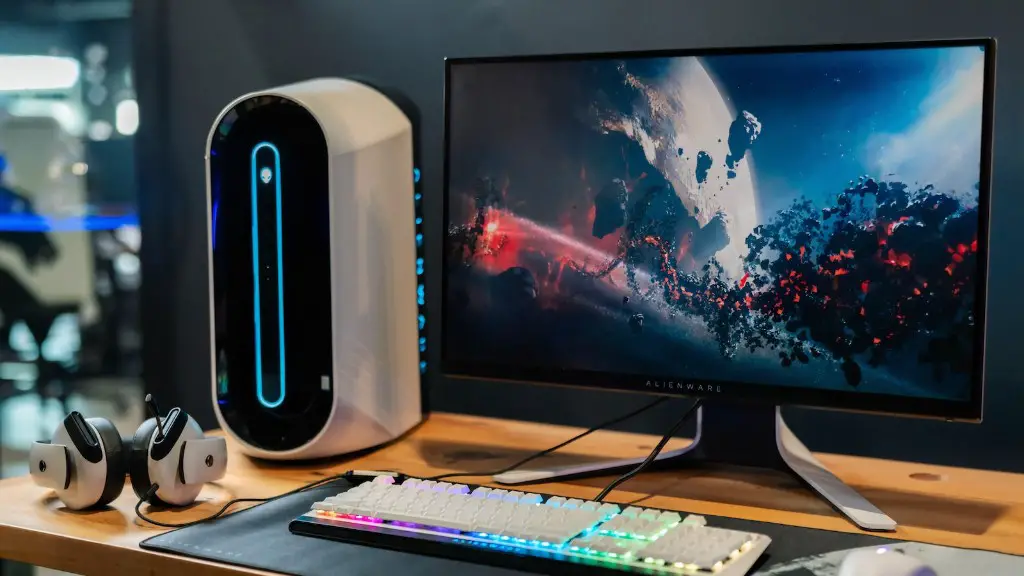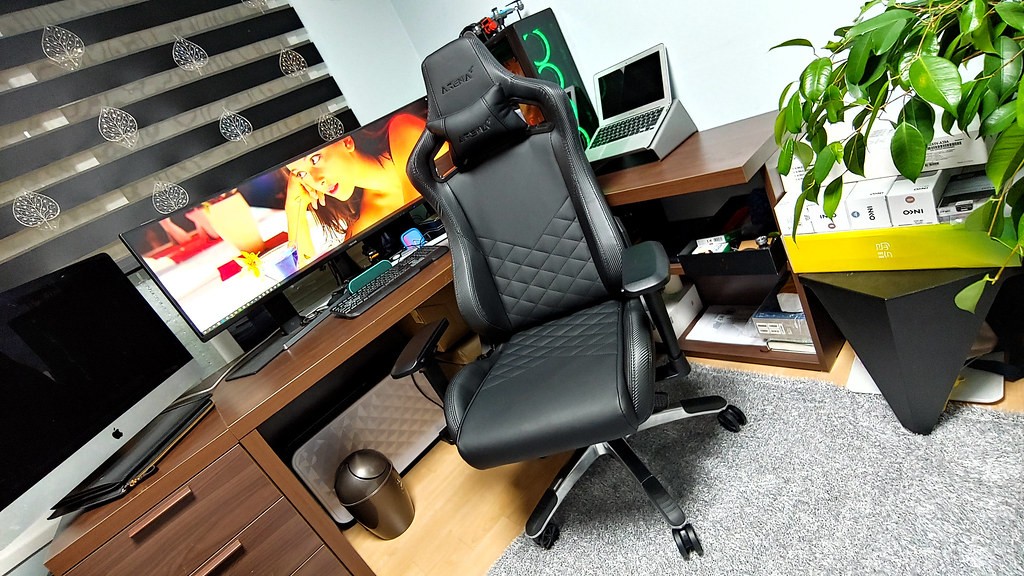For many of us, the size of our gaming monitor is the most important factor when it comes to picking out the best setup for our needs. After all, it can be quite difficult deciding on the perfect size for our gaming monitor. There are a few key points to consider when choosing a suitable size for your gaming monitor.
Firstly, it’s important to take into account your viewing distance. Most people will be sitting within a range of three to five feet, meaning you’ll need to account for that when selecting a size. The further away you sit, the bigger the monitor you can buy. Secondly, consider the resolution and aspect ratio of the monitor. A higher resolution and a wider aspect ratio, such as the ultra-wide 1080p displays, will allow you to view more information on the screen, eliminating the need to scroll or zoom.
Thirdly, think about the type of games you’ll primarily be playing. If you’re a fan of first-person shooters, then you’ll need a monitor that can keep up with fast-paced action. On the other hand, if you like strategy games or MMORPGs, then a larger display may be better. This will allow you to take in more of the game world at once, and make it easier to keep track of all the different elements. Lastly, your budget is also an important factor. Generally speaking, the bigger the monitor, the more expensive it will be.
In conclusion, there’s no “ideal” size for your gaming monitor. With a wide variety of sizes and resolutions to choose from, everyone’s setup will be slightly different. However, by considering your viewing distance, resolution, type of game and budget, you should be able to choose a size that works for you.
Types of Monitor Sizes
When it comes to picking out a monitor size, you’ve got several different options to choose from. The most common sizes are 21.5-inches, 24-inches and 27-inches. 21.5-inch monitors are usually best for those with a smaller viewing distance (around two to three feet). They are also the most affordable option, making them a great choice for budget gamers. 24-inch monitors offer a nice balance between size and cost, making them a good all-rounder for those who want to get the most out of their gaming experience without spending too much.
If you’ve got a bigger viewing distance or a larger budget, then a 27-inch model may be the way to go. These monitors nearly double the image size of their 21.5-inch counterparts, making them great for watching movies or intense gaming sessions. Ultra wide monitors are also growing in popularity, with resolutions of 3440×1440 and even 5120×2160 making them ideal for those who need to see more information at a glance.
No matter what size monitor you decide to go with, it’s important that you make sure it can handle the games you want to play. Pay attention to the manufacturer’s specifications, as this will tell you the resolution, refresh rate and response time of the monitor. Having a higher resolution will mean that the image will be crisper and smoother, and higher refresh rates will reduce motion blur and ghosting.
HDMI & DisplayPort Cables
To connect your gaming monitor to your PC, you’ll need an HDMI or DisplayPort cable. Both of these cables offer blazing-fast transfer rates that can handle resolutions up to 4K (3840×2160) and beyond. HDMI cables are the most common, and are generally easier to source. However, make sure you buy the latest version, as there are multiple versions available, each with different transfer speeds.
DisplayPort cables offer the highest transfer speeds, up to 8K resolution, and are more reliable when it comes to long cable runs. However, they can be hard to come by, so make sure you check if your gaming monitor has a DisplayPort port before buying one.
No matter what sort of cable you decide to go with, it’s important that you have the right one in order to maximize the performance of your gaming monitor. It’s also a good idea to get a few spare cables, as they’re often the first components to fail.
Choosing the Right Stand & Mount
Once you’ve got your gaming monitor and cables sorted, it’s time to think about how you’re going to position it. Desktops usually come with a basic stand, however if you want to free up some space or mount the monitor onto a wall, then you’ll need to look into buying an aftermarket stand or mount.
Monitor stands come in a variety of styles, from basic ones that sit your monitor straight on your desk to more advanced models that can tilt and rotate. Monitor mounts are another popular option and can be wall or ceiling-mounted, depending on the model. Generally speaking, monitor mounts are a great option for saving space, as the monitor can be suspended from the wall or ceiling, freeing up valuable room on your desk.
When shopping for a stand or mount, make sure you double-check its size and weight requirements. This is especially important if you’ve got a larger gaming monitor as some stands may not be able to handle the extra weight. Also, make sure the stand or mount you buy is compatible with your make and model of monitor.
Keeping Your Monitor Cool
Finally, it’s important to consider the cooling of your gaming monitor. After all, the more powerful your gaming monitor is, the more heat it will generate. This can cause the monitor to slow down and reduce its performance, if it’s not properly cooled. To address this, you’ll want to make sure your gaming monitor is well ventilated. If it’s not, then it’s worth investing in a cooling pad or stand.
Cooling pads are standalone fans that sit beneath the monitor, keeping it cool. Monitor stands can also include built-in cooling fans that are designed to keep the monitor cool without taking up desk space. If you want to maximize the performance of your gaming monitor, then it’s best to get one of these cooling solutions to keep it from getting too hot.
G-Sync & Freesync
In order to ensure a smooth gaming experience, it’s important to consider technologies such as G-Sync and Freesync. G-Sync is a proprietary technology developed by NVIDIA, which synchronizes the monitor’s refresh rate with the frame rate of the graphics card, reducing stuttering and tearing. Freesync is a similar technology but is developed by AMD. Both technologies are great for eliminating stuttering and lag, ensuring you get a smooth gaming experience.
It’s also important to note which ports on your gaming monitor are compatible with G-Sync and Freesync. Some monitors have ports that are only compatible with one or the other, while other monitors offer ports that can be used with either technology. Be sure to do your research before purchasing a gaming monitor so you know what to expect.
The Bottom Line
When choosing a gaming monitor size, there are a few key points to consider, such as your viewing distance, resolution, type of game and budget. You’ll also need to make sure you’re using the right type of cable and a suitable stand or mount. Finally, it’s important to consider the cooling of the monitor and whether it’s compatible with G-Sync or Freesync.
By considering each of these points, and taking the time to research what’s available on the market, you should be able to pick a gaming monitor that works for you. With the right setup, you’ll be able to enjoy an immersive and enjoyable gaming experience.



